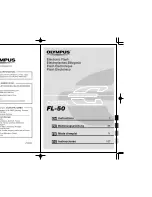
Tamarisk
®
640
Software ICD
18
Figure 2– Upload to TIM Message Sequence Diagram
The TIM checks the size and region parameters and, if acceptable, responds with an ACK and
setup response. The setup response message has the same command ID as the setup message
(0x74) and has 3, 16-bit parameters.
The CU then begins sending packets to the TIM using “Data Transfer Upload Packet” messages
(0x72). Each packet message carries a payload whose size is always an even number of bytes. The
payload packet contains a packet number (16-bits) and packet payload bytes. Payload size has
historically been 244 bytes. The packet number is a zero-based, integer count packets. It is used to
detect missing packets and to initiate retries.
At any time, the TIM may send a “Data Transfer Upload Packet” (0x72) message to the CU to
control the flow of packets or to indicate an error condition. This flow control message includes 2,
16-bit parameters. The first is a response ID and the second is a packet number. When the CU
receives the flow control message, it should respond as indicated in Table 24
At any time, the CU may send a “Data Transfer Abort” message (0x43). Upon receipt of this
message the TIM will reset its internal state machines and await a new setup message.
Following transmission of the last data packet, the TIM will send a flow control message with
ID=8 to indicate flash is being programmed followed by a flow control message with ID=10 to
indicate that the upload has been successful, the flash burn is complete, data transfer operations
will now cease.
CU
TIM
0x74 (18)
0x02 (2)
0x74 (3)
0x72 (244)
0x72 (244)
…
0x72 (244)
0x72 (4)
0x72 (4)
…
0x72 (244)
0x72 (202)
0x72 (4)
0x72 (244)
Upload
Setup
ACK
Upload Packet
Upload Packet
Upload Packet
Pause
Resume
Upload Packet
Upload Packet
Upload Packet
Upload Setup
Sector Burning (8)
Burning Complete (9)
Sector Burning (8)
0x72 (4)
Transfer Complete (10)
Flash
Sector
Flash
Sector
















































